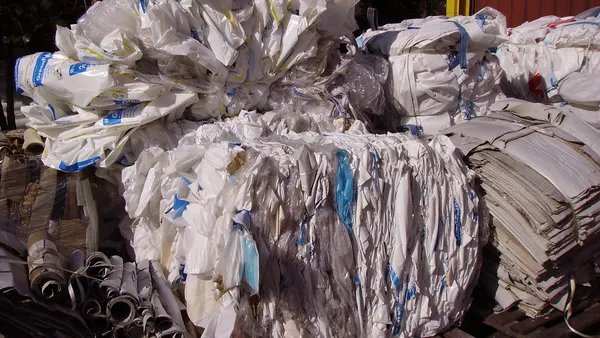Dive Brief:
- A new report from Closed Loop Foundation recognizes the financial challenges of accepting glass at single-stream material recovery facilities, but makes the case for investing in new technology that can create more marketable material. The report estimates that if implemented on a large scale this equipment could help save MRF operators and municipalities $100 million over five years.
- According to the report, municipalities and MRFs are currently spending $150 million per year to dispose of single-stream glass that isn't marketable in their areas. Based on interviews with operators, Closed Loop estimates that the average facility may be spending $35 per ton of glass it accepts when including disposal and transportation costs.
- MRFs that invest in the recommended sorting systems to produce higher quality streams of cullet and separate more non-glass residue can potentially see average savings of $25 per ton or more. This investment is seen as best-suited for MRFs that handle 10,000 tons or more of glass per year. Estimated capital costs for upgrading one facility range from $350,000 to $1 million.
Dive Insight:
Glass is a commonly cited challenge for many single-stream programs, especially in regions without local access to end markets. Though as noted in the report, companies such as Strategic Materials Inc. have made a commitment to pay fair prices for quality material and higher recovery volumes will help strengthen the overall glass market. Closed Loop estimates that at least 50 MRFs in the U.S. are good candidates for upgraded systems and the current supply of recycled glass could be increased by 33% (1 million tons per year) if they made the necessary investments.
Casella, Recology and ReCommunity were highlighted in the report for making such investments and a number of other operators have also taken similar steps. MRFs in Iowa and Colorado have received recent attention for upgrading their equipment. Glass recyclers such as Momentum Recycling and Ripple Glass have also been working with companies and municipalities to expand markets for the material.
Depending on the region, markets for glass are still solid and multiple industry groups have been looking at ways to strengthen those opportunities for MRF operators. In areas where that isn't the case some municipalities are still choosing to accept the material, but a growing list have decided it's not worth the loss. For cities such as Houston, New Orleans, Nashville and Santa Fe this has meant replacing curbside access with drop-off. Though if more MRFs continue to show it's worth the capital investment in new equipment, possibly with the assistance of Closed Loop or other funders, that could start to change.










